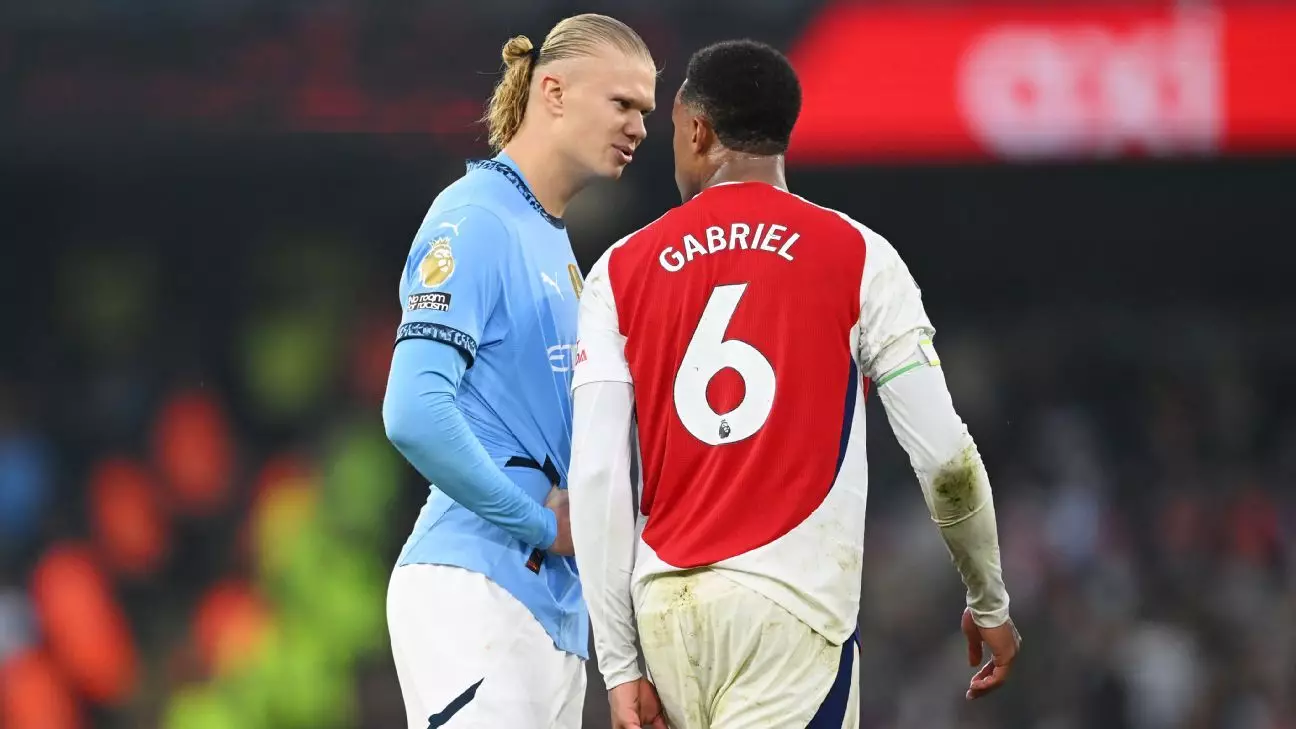In a dramatic climax to a Premier League clash between Manchester City and Arsenal, the focus shifted from a thrilling 2-2 scoreline to a controversial moment involving Erling Haaland. After a last-minute equalizer from John Stones, cameras caught Haaland throwing the ball at Arsenal defender Gabriel Magalhães. This incident has reignited discussions on player conduct and officiating in crucial moments of a match. Despite the visibility of the act, it has been reported that Haaland will not face any disciplinary action from the Football Association (FA). This decision raises questions about standards of behavior expected on the pitch, particularly in high-stakes situations.
The on-field referee, Michael Oliver, overlooked Haaland’s actions during the match, but the intervention of video assistant referee (VAR) John Brooks ensured that the incident was reviewed. However, Brooks concluded that throwing the ball did not fall under the category of violent conduct. This highlights a recurring theme in modern football: the reliance on VAR to navigate controversial incidents. While some may argue that such conduct is uncharacteristic of a player of Haaland’s caliber, the decision not to punish him could set a precedent that might embolden similar actions in the future.
Following the match, tensions flared when Haaland was seen confronting Arsenal manager Mikel Arteta, imploring him to “stay humble” after a heated exchange on the pitch. This interaction, along with Haaland’s scuffle with Gabriel Jesus, underscores the emotional weight players carry in tightly contested matches. It further emphasizes how the balance of competition fuels not only the thrill of the game but also potential friction between rivals. Remarkably, such confrontations seem to be part of the broader narrative of rivalry, with City players expressing frustration over perceived time-wasting by an Arsenal side reduced to ten men.
As Manchester City prepares for a quick turnaround in competing against Watford in the Carabao Cup, manager Pep Guardiola faces selection dilemmas made even more complicated by the recent clash with Arsenal. The physical demands placed on his squad just 48 hours earlier pose challenges for maintaining competitiveness. Notably, Kevin De Bruyne remains sidelined with a thigh injury, leaving Guardiola to ponder tactical adjustments and potentially field an entirely different lineup. This situation reveals the ongoing stress of top-flight football, where the intersection of player health, squad rotation, and fixture congestion becomes paramount.
The episode involving Haaland at the Etihad Stadium serves as a reminder of the thin line players tread between competitive spirit and acceptable conduct on the football field. While he escapes punishment this time, the ripple effect of such incidents may influence not only player behavior but also how officials manage heated moments in the future. Amid a landscape where emotions run high, it is imperative for governing bodies to maintain clear and consistent standards to uphold the integrity of the game. The football community eagerly awaits how these evolving dynamics will shape future encounters on the pitch.

